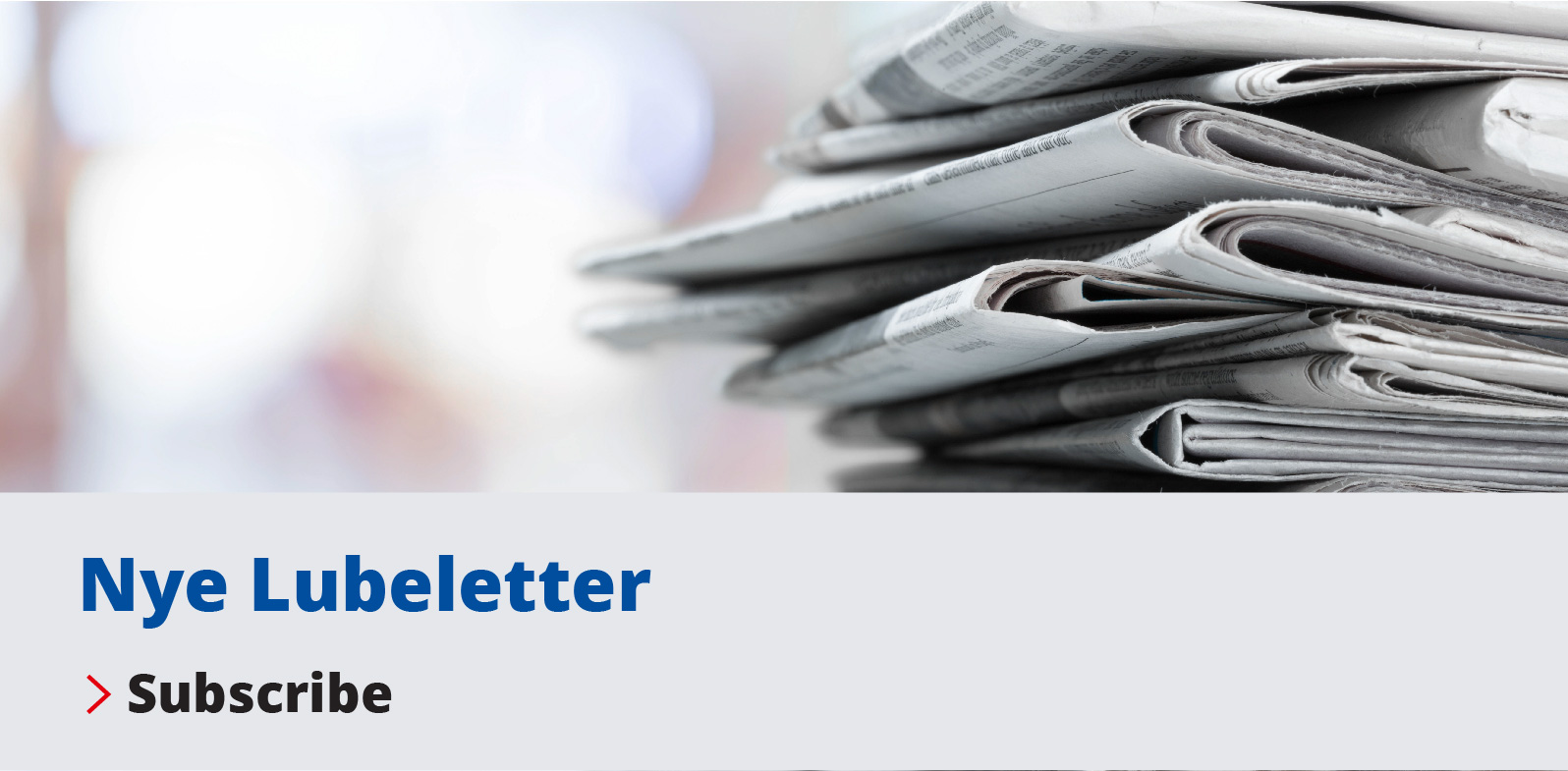Oil Separation in Grease
Video Instructions provided by Nye Lubricants on how to mix the oil back into the grease.
One of the most frequently asked questions from our customer base involves oil separation. When customers open our grease pails they might see a thin layer of oil at the top of the grease and be concerned. Some oil separation is not a problem and commonly occurs in lubricants. Oil separation is usually insignificant when compared with the mass of grease in the container and will not functionally change the product if you safely stir the oil back into the bulk of the grease. Oil separation can occur when the oil is exposed to heat over a long period of time, when the pail is stored in a hot storage environment, when the grease surface is uneven or when the pail is exposed to pressure and altitude changes.
Before mixing the oil back into the grease, you must first put on the proper personal protective equipment. Safety glasses, gloves and a head cover must be worn at all times. A long sleeve shirt or lab coat and closed toe shoes are recommended.
You will use the following utensils in the mixing process: cleaning spray, clean wipes, pail opener, oar, squeegee and a rubber mallet.
It is important that you have properly cleaned all utensils with solvent solution prior to the mixing process to avoid contamination.
Before opening the pail, you must wipe down the top of the container with the cleaning spray and clean wipes. Spray the top of the pail and thoroughly wipe away any debris or dust with the clean wipes. This will eliminate the risk of contaminating the product with outside particles.
After the top is cleaned you can remove the pail lid. First, pull off the lock tab. Then using the pail opener, work your way around the cover to break the seal. When you have made your way around and completely loosened the cover from the pail, remove the cover and place it on a flat and clean surface in order to avoid any contamination of the grease.
Next, take the oar and insert it into the grease about half way down the pail, keeping contact with the pail wall. Working clock wise, begin to gently fold the areas displaying oil separation back into the grease.
There are several steps you want to avoid when mixing the oil back into the grease. You do not want to pour any excess oil out of the pail. All separated oil should be mixed back into the grease and not removed. Removing the excess oil can alter the density of the grease. The grease should only be mixed in the pail and should not be removed and placed in any other containers for mixing. Doing this could potentially introduce contamination to the grease. As well, removing the grease and placing it into another container for mixing could overmix the grease and potentially alter the properties of the product.
Once the grease is completely mixed back together and no oil separation is visually evident, clean the squeegee to remove the excess grease off the oar. The grease from the squeegee can be put back into the pail.
It is important that you smooth over the top layer of grease with the squeegee before the cover is put back on. You do not want to leave any "craters" in the grease surface. Oil separation can be reduced if the surface of the grease is kept smooth during storage. Leaving any peaks or valleys in the grease surface creates pockets for the oil to pool into. Oil separation is more likely to occur in those greases that have uneven top surfaces.
Lastly, using the rubber mallet, reapply the cover to the pail. Place the cover on top and working around in a circular motion, carefully bang the cover to secure it onto the pail again.
If you have any further questions regarding our products than call us at 1.508.996.6721.



